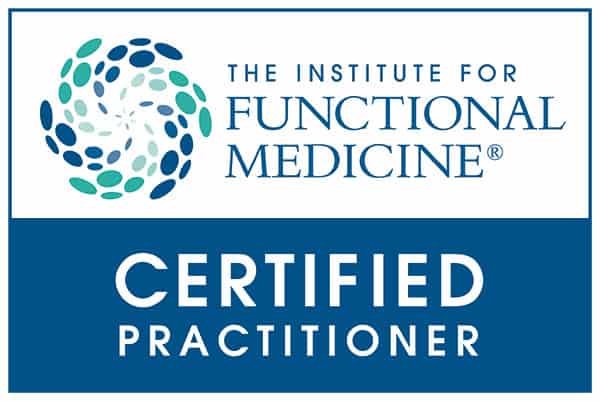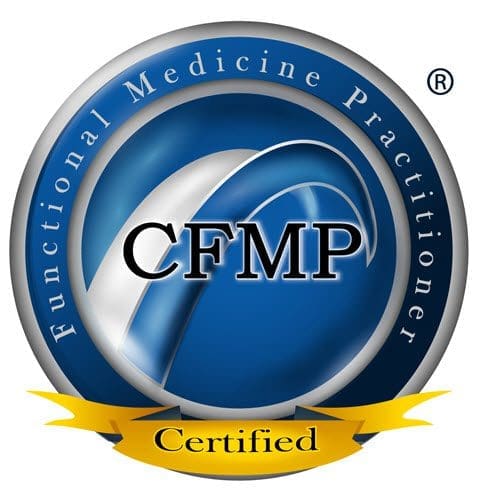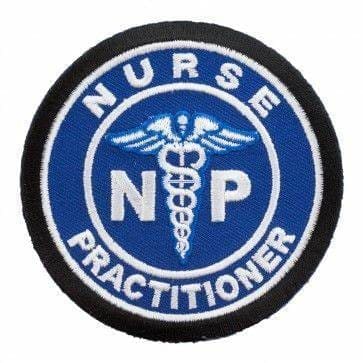Discover how chiropractic care for musculoskeletal inflammation can help alleviate discomfort and improve your overall well-being.
Contents
The Comprehensive Guide to Chiropractic Care for Joint and Muscle Pain: A Holistic Approach
Introduction
Imagine waking up with a stiff neck or aching joints, feeling like your body’s playing a prank on you. For millions, joint and muscle pain is a daily reality, often tied to inflammation from injuries, chronic conditions, or even lifestyle choices. Chiropractic care offers a non-invasive, holistic approach to tackle this pain, and it’s more than just “cracking your back.” This comprehensive guide examines how chiropractic care can help manage joint and muscle pain associated with inflammation, exploring clinical evidence, environmental factors, and the expertise of Dr. Alexander Jimenez, a leading chiropractor in El Paso. We’ll also explore related health topics, such as the gut microbiome and nutrition, all written at a high school reading level to ensure clarity and engagement. So, grab a comfy seat (your spine will thank you), and let’s dive in!
Understanding Chiropractic Care
Chiropractic care is a healthcare discipline that focuses on the musculoskeletal system, particularly the spine. Chiropractors use manual techniques, like spinal adjustments, to correct misalignments (subluxations) that may cause pain, stiffness, or reduced mobility. The goal? Restore balance to your body’s structure, much like aligning the wheels of a car to ensure a smooth ride.
For joint and muscle pain, chiropractic care can be a game-changer. It’s not about popping pills or going under the knife—it’s about helping your body heal naturally. Chiropractors also offer soft-tissue therapy, exercises, and lifestyle advice to support recovery and overall well-being. Research suggests that chiropractic adjustments can influence the nervous system, potentially reducing inflammation and pain (Roy et al., 2009). It’s like giving your body a gentle nudge to get back on track.
Why Inflammation Matters
Inflammation is your body’s way of saying, “Hey, something’s wrong!” It’s a natural response to injury or stress, but when it lingers (chronic inflammation), it can cause significant damage to your joints and muscles. Conditions like arthritis, fibromyalgia, or even a bad fall can trigger inflammation, leading to pain and stiffness. Chiropractic care may help by improving joint function and calming the nervous system, which can dial down those inflammatory signals. Additionally, chiropractors often recommend dietary adjustments—such as substituting fries for leafy greens—to help manage inflammation.
Clinical Rationale for Chiropractic Care
Let’s get to the science behind why chiropractic care works for joint and muscle pain. Several studies highlight its effectiveness, particularly for conditions involving inflammation.
Musculoskeletal Disorders and Iron Overload
Did you know that too much iron in your body could mess with your joints? A comment on the American College of Rheumatology guidelines suggests that iron overload, often associated with conditions such as hemochromatosis, can lead to joint pain and musculoskeletal issues (Vasquez, 1996). The prevalence of iron overload is reportedly five times higher in patients with peripheral arthropathy than in the general population, making it worthwhile to check if you have persistent joint pain (Olynyk & Bacon, 1994). Chiropractors, while not directly treating iron overload, can support overall health through adjustments and nutritional advice, potentially easing related symptoms. It’s like giving your body a tune-up to handle the extra load.
Reflex Activation of Gluteal Muscles
Low-back pain is a common complaint, and weak gluteal muscles (your butt muscles!) can make it worse. A study in Spine found that stimulating the proprioceptive system—your body’s sense of position—through “balance shoes” increased gluteal muscle activity in healthy subjects, suggesting a potential way to restore function in individuals with low-back pain (Bullock-Saxton et al., 1993). Chiropractors often employ similar principles, prescribing exercises to strengthen the gluteal muscles and enhance pelvic stability. Picture it like training your glutes to be the superheroes of your lower back, keeping everything stable and pain-free.
Avoiding NSAID Risks
Nonsteroidal anti-inflammatory drugs (NSAIDs) like ibuprofen are go-to solutions for pain, but they come with a catch. A review in The American Journal of Medicine estimates that about 107,000 patients are hospitalized annually for NSAID-related gastrointestinal issues, with at least 16,500 deaths among arthritis patients alone (Singh, 1998). This is known as NSAID gastropathy, and it’s a serious concern for long-term users. Chiropractic care offers a safer alternative by addressing pain through adjustments and lifestyle changes, reducing the need for NSAIDs. It’s like choosing a scenic bike ride over a bumpy car trip—less risk, more reward.
The SPEED Program for Osteoporosis
For older adults, especially women with osteoporosis and kyphosis (a hunched posture), back pain and falls are major concerns. A study published in Mayo Clinic Proceedings showed that the Spinal Proprioceptive Extension Exercise Dynamic (SPEED) program significantly reduced back pain and fall risk in osteoporotic kyphotic women (Sinaki et al., 2005). The program uses exercises and a weighted spinal orthosis to improve balance and strength. Chiropractors often incorporate similar exercises, helping patients stand taller and move with greater confidence. It’s like having a personal trainer for your spine to keep it strong and steady.
Holistic Health and Cost Savings
Chiropractic care isn’t just about pain relief; it’s about keeping you out of the hospital. A study on the Maharishi Vedic Approach to Health found that participants had 59-63% lower medical expenditures compared to norms, thanks to a focus on prevention and holistic care (Orme-Johnson et al., 1997). Chiropractic care shares this philosophy, emphasizing early intervention and lifestyle changes to reduce healthcare costs. By addressing issues before they escalate, chiropractors help you save money and stay healthy—think of it as investing in your body’s future.
Environmental Factors and Chronic Inflammation
Your environment plays a big role in how your body feels. Diet, stress, and exposure to toxins can fuel chronic inflammation, making joint and muscle pain worse. For instance, a diet heavy in processed foods and sugars can spike inflammatory markers, while chronic stress can throw your immune system into overdrive. Even environmental toxins, like air pollution, can contribute to systemic inflammation.
Chiropractic care tackles these issues holistically. Adjustments can improve nervous system function, potentially reducing stress-related inflammation. Chiropractors also guide patients toward anti-inflammatory diets—think berries, nuts, and fish—and stress management techniques like yoga or meditation. A study in Acta Biotheoretica argues that dietary interventions are often more effective than drugs, such as NSAIDs, for managing health conditions, supporting the chiropractic approach (vd Steen & Ho, 2001). It’s like cleaning up your body’s internal environment to make it a happier place for your joints and muscles.
Personal Injury and Dr. Alexander Jimenez
If you’ve been in a car accident or suffered another injury, the road to recovery can feel like a rollercoaster. That’s where chiropractic care shines, especially with experts like Dr. Alexander Jimenez in El Paso. Dr. Jimenez, a Doctor of Chiropractic with advanced credentials (DC, APRN, FNP-BC), is renowned for his work in personal injury cases. His practice, accessible at El Paso Back Clinic and LinkedIn, combines chiropractic adjustments with advanced imaging, diagnostic evaluations, and dual-scope procedures to pinpoint and treat injuries.
Dr. Jimenez serves as a bridge between medical care and legal documentation, ensuring patients receive the necessary treatment while supporting their legal cases. His approach is like a GPS for recovery—guiding you through the healing process with precision and care. Whether it’s whiplash, back pain, or joint issues from an accident, his tailored plans help patients get back on their feet.
Controversies in Chiropractic Care
Chiropractic care isn’t without its critics. In 2006, the Texas Medical Association filed a lawsuit arguing that chiropractors shouldn’t perform certain procedures, like needle electromyography, as they fall under the practice of medicine (Texas Medical Association, 2006). This highlights ongoing debates about the scope of chiropractic practice. However, evidence supports the safety and effectiveness of chiropractic care for conditions like low-back pain when performed by qualified professionals. The key is choosing a licensed chiropractor and discussing your health history to ensure safe treatment.
Unlocking the Secrets of Inflammation- Video
Additional Health Insights
Chiropractic care doesn’t exist in a vacuum—it’s part of a broader approach to health. Here are some related topics that underscore its holistic benefits:
Gut Microbiome and Neurological Health
Your gut is like a second brain, influencing everything from mood to pain perception. Research published in The Lancet Neurology reveals that the gut microbiome can influence neurological disorders, indicating that gut health has a significant impact on overall wellness (Cryan et al., 2020). Chiropractors often emphasize gut-friendly diets, which can reduce systemic inflammation and support musculoskeletal health.
Mitochondria and Osteoarthritis
Mitochondria, the powerhouses of your cells, play a role in osteoarthritis. A study in Nature Reviews Rheumatology links mitochondrial dysfunction to cartilage degradation, suggesting that therapies that improve cellular health could be beneficial (Blanco et al., 2011). While chiropractic care doesn’t directly target mitochondria, it supports overall health, potentially aiding joint function.
Brain Plasticity in Spinal Cord Injuries
Spinal cord injuries can disrupt nervous system function, but the brain’s plasticity offers hope for recovery. A review in Frontiers in Human Neuroscience highlights how rehabilitation, including chiropractic techniques, can enhance recovery by promoting neural adaptations (Nardone et al., 2017). Adjustments may support nervous system health, aiding recovery.
Nutrition and Brain Function
What you eat affects how you feel and think. A study in Nature Reviews Neuroscience examines how nutrients such as omega-3s and antioxidants support brain function, which can indirectly impact pain perception (Gómez-Pinilla, 2008). Chiropractors often provide nutritional guidance, reinforcing the link between diet and musculoskeletal health.
Table: Key Studies Supporting Chiropractic Care
| Study Topic | Source | Key Finding | Relevance to Chiropractic Care |
|---|---|---|---|
| Iron Overload and Musculoskeletal Pain | Vasquez (1996) | Iron overload is associated with joint pain, suggesting that screening for patients with musculoskeletal symptoms may be beneficial. | Supports holistic chiropractic approaches, including nutritional advice. |
| Gluteal Muscle Activation | Bullock-Saxton et al. (1993) | Proprioceptive stimulation improves gluteal function, reducing low-back pain. | Aligns with chiropractic exercises for pelvic stability. |
| NSAID Gastropathy | Singh (1998) | NSAIDs cause significant GI complications, with 107,000 hospitalizations annually. | Highlights chiropractic as a safer alternative for pain management. |
| SPEED Program | Sinaki et al. (2005) | An exercise program reduces the risk of falls and back pain in women with osteoporosis. | Supports chiropractic rehabilitation techniques. |
| Holistic Health Costs | Orme-Johnson et al. (1997) | Holistic approaches reduce medical costs by 59-63%. | Reinforces chiropractic’s cost-effective, preventive focus. |
Conclusion
Chiropractic care offers a promising, holistic approach to managing joint and muscle pain associated with inflammation. By addressing structural issues, improving muscle function, and promoting lifestyle changes, chiropractors help patients feel better without relying on risky medications. Dr. Alexander Jimenez’s expertise in personal injury cases exemplifies how chiropractic care can bridge the gap between medical and legal needs, offering hope to those recovering from accidents. While it’s not a magic bullet (sorry, no superhero capes included), chiropractic care can be a powerful tool for a healthier, pain-free life.
Disclaimer: This blog post is for informational purposes only and should not replace professional medical advice, diagnosis, or treatment. Consult a qualified healthcare provider for personalized guidance. Never disregard professional advice or delay seeking it based on this content.
References
- Blanco, F. J., Rego, I., & Ruiz-Romero, C. (2011). The role of mitochondria in osteoarthritis. Nature Reviews Rheumatology, 7(3), 161–169. https://pubmed.ncbi.nlm.nih.gov/21173754/
- Bullock-Saxton, J. E., Janda, V., & Bullock, M. I. (1993). Reflex activation of gluteal muscles in walking: An approach to restoration of muscle function for patients with low-back pain. Spine, 18(6), 704–708. https://pubmed.ncbi.nlm.nih.gov/8516698/
- Cryan, J. F., O’Riordan, K. J., Cowan, C. S. M., Sandhu, K. V., Bastiaanssen, T. F. S., Boehme, M., … & Dinan, T. G. (2020). The gut microbiome in neurological disorders. The Lancet Neurology, 19(2), 179–194. https://pubmed.ncbi.nlm.nih.gov/31753762/
- Gómez-Pinilla, F. (2008). Brain foods: The effects of nutrients on brain function. Nature Reviews Neuroscience, 9(7), 568–578. https://pubmed.ncbi.nlm.nih.gov/18568016/
- Nardone, R., Höller, Y., Brigo, F., Seidl, M., Christova, M., Golaszewski, S., & Trinka, E. (2017). Brain plasticity in patients with spinal cord injuries: A systematic review. Frontiers in Human Neuroscience, 11, 149. https://pubmed.ncbi.nlm.nih.gov/28420981/
- Orme-Johnson, D. W., Herron, R. E., & Schneider, R. H. (1997). An innovative approach to reducing medical care utilization and expenditures. The American Journal of Managed Care, 3(1), 135–144. https://pubmed.ncbi.nlm.nih.gov/10169245/
- Roy, R. A., Boucher, J. P., & Comtois, A. S. (2009). Inflammatory response following a short-term course of chiropractic treatment in patients with chronic low back pain. Journal of Manipulative and Physiological Therapeutics, 32(7), 510–517. https://www.jmptonline.org/article/S0161-4754(09)00158-5/fulltext
- Sinaki, M., Brey, R. H., Hughes, C. A., Larson, D. R., & Kaufman, K. R. (2005). Significant reduction in risk of falls and back pain in osteoporotic-kyphotic women through a Spinal Proprioceptive Extension Exercise Dynamic (SPEED) program. Mayo Clinic Proceedings, 80(7), 849–855. https://pubmed.ncbi.nlm.nih.gov/16007888/
- Singh, G. (1998). Recent considerations in nonsteroidal anti-inflammatory drug gastropathy. The American Journal of Medicine, 105(1B), 31S–38S. https://pubmed.ncbi.nlm.nih.gov/9715832/
- Texas Medical Association. (2006). Physicians ask court to protect patients from illegal chiropractic activities. https://www.texmed.org/Template.aspx?id=5259
- Vasquez, A. (1996). Musculoskeletal disorders and iron overload disease: Comment on the American College of Rheumatology guidelines for the initial evaluation of the adult patient with acute musculoskeletal symptoms. Arthritis & Rheumatism, 39(10), 1767–1768. https://pubmed.ncbi.nlm.nih.gov/8843875/
- vd Steen, W. J., & Ho, V. K. Y. (2001). Drugs versus diets: Disillusions with Dutch health care. Acta Biotheoretica, 49(2), 125–140. https://pubmed.ncbi.nlm.nih.gov/11450808/
General Disclaimer, Licenses and Board Certifications *
Professional Scope of Practice *
The information herein on "Chiropractic Care Benefits for Musculoskeletal Inflammation" is not intended to replace a one-on-one relationship with a qualified health care professional or licensed physician and is not medical advice. We encourage you to make healthcare decisions based on your research and partnership with a qualified healthcare professional.
Blog Information & Scope Discussions
Welcome to El Paso's Premier Wellness and Injury Care Clinic & Wellness Blog, where Dr. Alex Jimenez, DC, FNP-C, a Multi-State board-certified Family Practice Nurse Practitioner (FNP-BC) and Chiropractor (DC), presents insights on how our multidisciplinary team is dedicated to holistic healing and personalized care. Our practice aligns with evidence-based treatment protocols inspired by integrative medicine principles, similar to those on this site and on our family practice-based chiromed.com site, focusing on naturally restoring health for patients of all ages.
Our areas of multidisciplinary practice include Wellness & Nutrition, Chronic Pain, Personal Injury, Auto Accident Care, Work Injuries, Back Injury, Low Back Pain, Neck Pain, Migraine Headaches, Sports Injuries, Severe Sciatica, Scoliosis, Complex Herniated Discs, Fibromyalgia, Chronic Pain, Complex Injuries, Stress Management, Functional Medicine Treatments, and in-scope care protocols.
Our information scope is multidisciplinary, focusing on musculoskeletal and physical medicine, wellness, contributing etiological viscerosomatic disturbances within clinical presentations, associated somato-visceral reflex clinical dynamics, subluxation complexes, sensitive health issues, and functional medicine articles, topics, and discussions.
We provide and present clinical collaboration with specialists from various disciplines. Each specialist is governed by their professional scope of practice and their jurisdiction of licensure. We use functional health & wellness protocols to treat and support care for musculoskeletal injuries or disorders.
Our videos, posts, topics, and insights address clinical matters and issues that are directly or indirectly related to our clinical scope of practice.
Our office has made a reasonable effort to provide supportive citations and has identified relevant research studies that support our posts. We provide copies of supporting research studies upon request to regulatory boards and the public.
We understand that we cover matters that require an additional explanation of how they may assist in a particular care plan or treatment protocol; therefore, to discuss the subject matter above further, please feel free to ask Dr. Alex Jimenez, DC, APRN, FNP-BC, or contact us at 915-850-0900.
We are here to help you and your family.
Blessings
Dr. Alex Jimenez DC, MSACP, APRN, FNP-BC*, CCST, IFMCP, CFMP, ATN
email: coach@elpasofunctionalmedicine.com
Multidisciplinary Licensing & Board Certifications:
Licensed as a Doctor of Chiropractic (DC) in Texas & New Mexico*
Texas DC License #: TX5807, Verified: TX5807
New Mexico DC License #: NM-DC2182, Verified: NM-DC2182
Multi-State Advanced Practice Registered Nurse (APRN*) in Texas & Multi-States
Multi-state Compact APRN License by Endorsement (42 States)
Texas APRN License #: 1191402, Verified: 1191402 *
Florida APRN License #: 11043890, Verified: APRN11043890 *
License Verification Link: Nursys License Verifier
* Prescriptive Authority Authorized
ANCC FNP-BC: Board Certified Nurse Practitioner*
Compact Status: Multi-State License: Authorized to Practice in 40 States*
Graduate with Honors: ICHS: MSN-FNP (Family Nurse Practitioner Program)
Degree Granted. Master's in Family Practice MSN Diploma (Cum Laude)
Dr. Alex Jimenez, DC, APRN, FNP-BC*, CFMP, IFMCP, ATN, CCST
My Digital Business Card
Licenses and Board Certifications:
DC: Doctor of Chiropractic
APRNP: Advanced Practice Registered Nurse
FNP-BC: Family Practice Specialization (Multi-State Board Certified)
RN: Registered Nurse (Multi-State Compact License)
CFMP: Certified Functional Medicine Provider
MSN-FNP: Master of Science in Family Practice Medicine
MSACP: Master of Science in Advanced Clinical Practice
IFMCP: Institute of Functional Medicine
CCST: Certified Chiropractic Spinal Trauma
ATN: Advanced Translational Neutrogenomics
Memberships & Associations:
TCA: Texas Chiropractic Association: Member ID: 104311
AANP: American Association of Nurse Practitioners: Member ID: 2198960
ANA: American Nurse Association: Member ID: 06458222 (District TX01)
TNA: Texas Nurse Association: Member ID: 06458222
NPI: 1205907805
| Primary Taxonomy | Selected Taxonomy | State | License Number |
|---|---|---|---|
| No | 111N00000X - Chiropractor | NM | DC2182 |
| Yes | 111N00000X - Chiropractor | TX | DC5807 |
| Yes | 363LF0000X - Nurse Practitioner - Family | TX | 1191402 |
| Yes | 363LF0000X - Nurse Practitioner - Family | FL | 11043890 |








